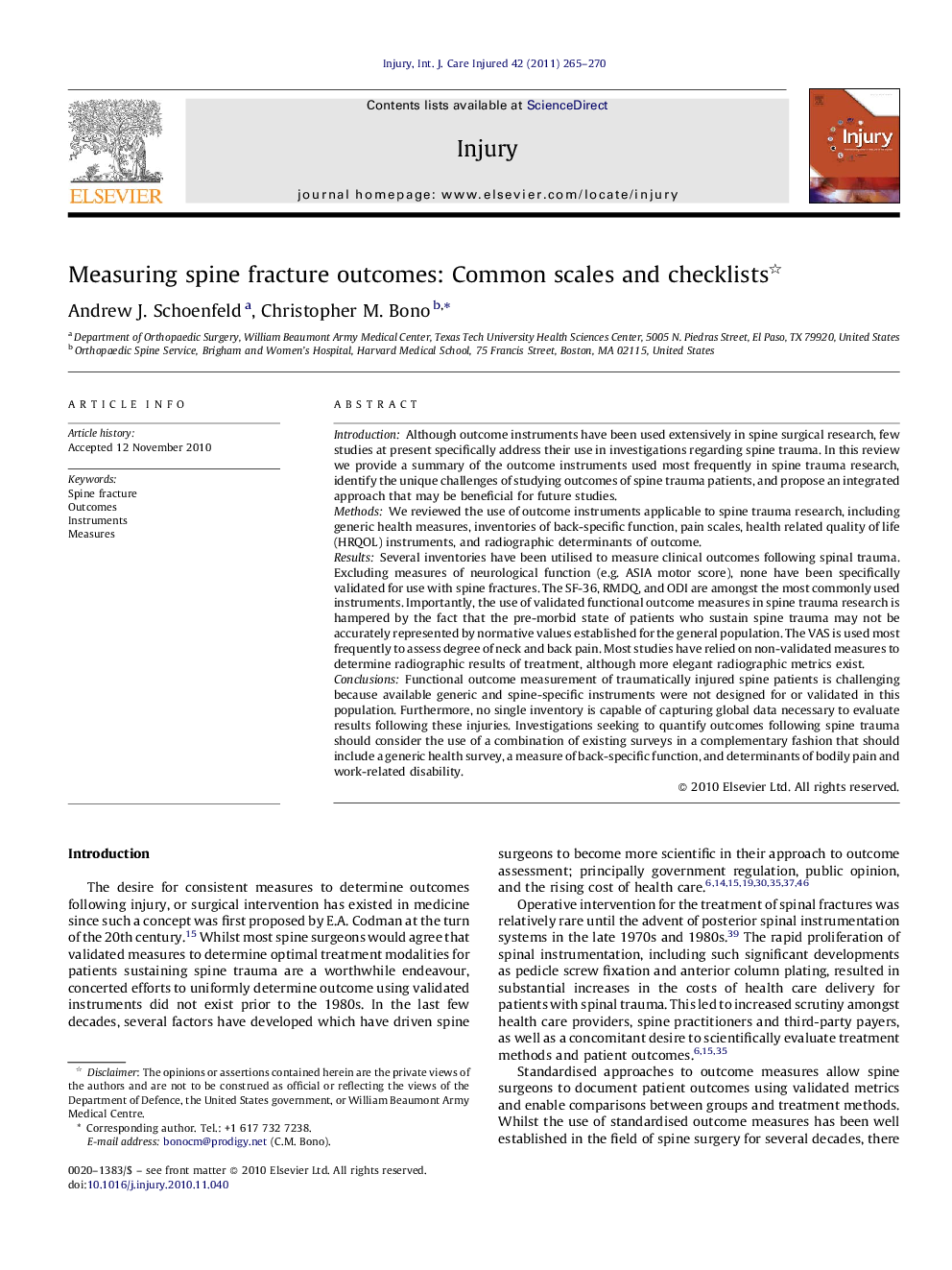| Article ID | Journal | Published Year | Pages | File Type |
|---|---|---|---|---|
| 3241486 | Injury | 2011 | 6 Pages |
IntroductionAlthough outcome instruments have been used extensively in spine surgical research, few studies at present specifically address their use in investigations regarding spine trauma. In this review we provide a summary of the outcome instruments used most frequently in spine trauma research, identify the unique challenges of studying outcomes of spine trauma patients, and propose an integrated approach that may be beneficial for future studies.MethodsWe reviewed the use of outcome instruments applicable to spine trauma research, including generic health measures, inventories of back-specific function, pain scales, health related quality of life (HRQOL) instruments, and radiographic determinants of outcome.ResultsSeveral inventories have been utilised to measure clinical outcomes following spinal trauma. Excluding measures of neurological function (e.g. ASIA motor score), none have been specifically validated for use with spine fractures. The SF-36, RMDQ, and ODI are amongst the most commonly used instruments. Importantly, the use of validated functional outcome measures in spine trauma research is hampered by the fact that the pre-morbid state of patients who sustain spine trauma may not be accurately represented by normative values established for the general population. The VAS is used most frequently to assess degree of neck and back pain. Most studies have relied on non-validated measures to determine radiographic results of treatment, although more elegant radiographic metrics exist.ConclusionsFunctional outcome measurement of traumatically injured spine patients is challenging because available generic and spine-specific instruments were not designed for or validated in this population. Furthermore, no single inventory is capable of capturing global data necessary to evaluate results following these injuries. Investigations seeking to quantify outcomes following spine trauma should consider the use of a combination of existing surveys in a complementary fashion that should include a generic health survey, a measure of back-specific function, and determinants of bodily pain and work-related disability.
